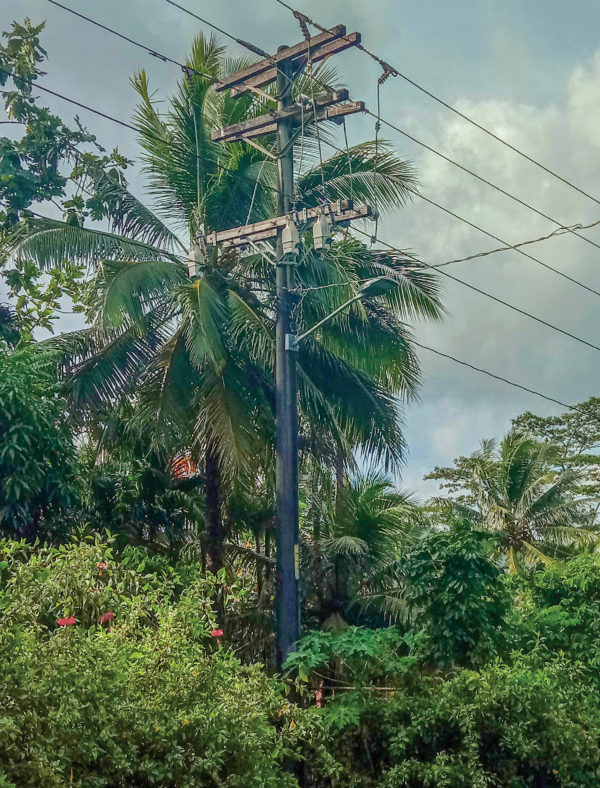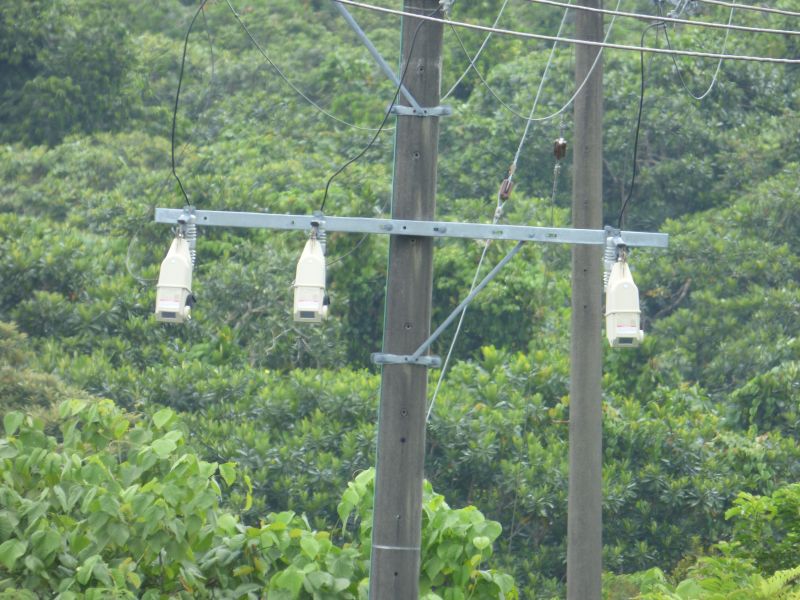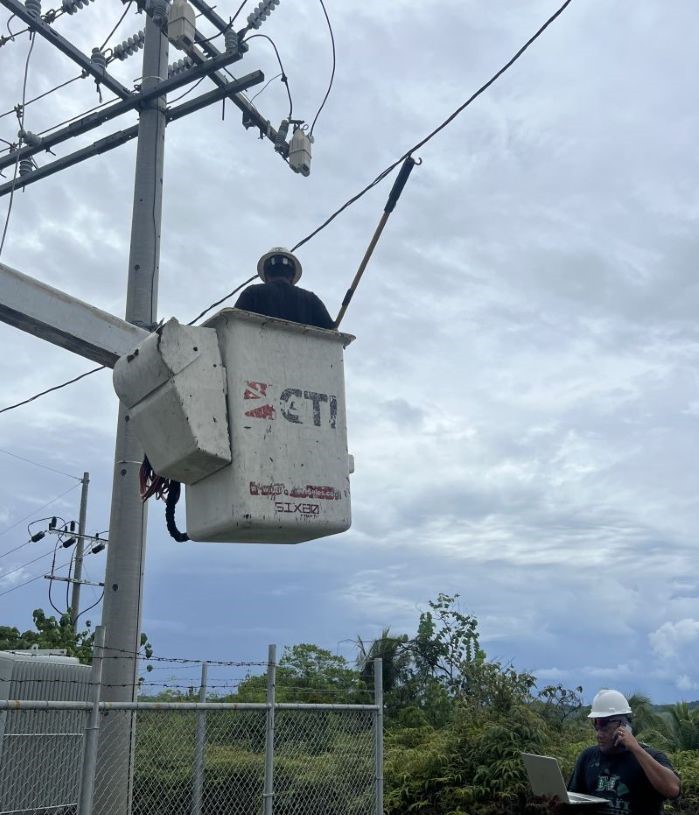Affordable Reliability Empowers Island Utility’s Renewable Energy Transition
Case Study
S&C FEATURED SOLUTION: TripSaver® II Cutout-Mounted Recloser
LOCATION: Palau, Pacific Islands
In Brief
- Palau Public Utilities Corporation incurred frequent outages from fast-growing vegetation and storms from the Pacific Ocean.
- The island utility installed 62 TripSaver II reclosers as an economical way to combat its challenges and stabilize the grid for renewable resources.
- The devices cleared 428 temporary faults over a three-year period.
- The utility reduced carbon emissions by 2.5 tons.
- Financial benefits included US $214,000 in cost savings and a 1.5-year payback period.
Customer Challenge
Palau Public Utilities Corporation (PPUC) serves approximately 7,000 customers across the Pacific Island nation, with 80% being residential customers. When faults occurred, the utility dispatched crews to remote areas of its 114 miles of 13.8kV distribution lines.

The utility faced some notable reliability challenges with load distributed from the main population center in the south of the island, along long lines running to the north. Overhead lines across the island are exposed to severe weather and rapid vegetation growth, contributing to an average of 167 outages per year—roughly an outage almost every other day.
These trips were time-consuming and expensive due to the difficulty accessing areas with overgrown vegetation, resulting in extended outage times for customers. The service visits also had environmental implications, as each truck roll produced carbon emissions.
PPUC began investigating options to improve reliability and sustainability that would meet its requirements:
- Address the core reliability and resilience issues caused by repeated and avoidable outages, as well as the associated financial and environmental costs.
- Create a more stable grid to support transitioning from diesel generation to renewable resources and the country’s vision to become more energy self-sufficient.
- Accommodate a constrained budget yet deliver meaningful results—a common challenge for island nations where budgets often limit infrastructure upgrades.
The utility evaluated several automation options, including load-break switches, three-phase reclosers, and single-phase reclosers, to determine which solution would meet its requirements.

As an island nation, Palau is susceptible to storms from the Pacific Ocean.
S&C Solution
PPUC engaged S&C Electric Company to discuss potential solutions. S&C demonstrated how its innovations have helped other utilities in similar challenging environments, including other island nations and storm-prone climates. Based on these proven successes, PPUC selected S&C’s TripSaver II Cutout-Mounted Recloser as its overhead system protection solution.
The TripSaver II recloser tests for transient faults and restores power automatically, preventing sustained outages and unnecessary truck rolls. With up to 80% of faults on overhead lateral lines caused by temporary issues, TripSaver II reclosers offered immediate benefits for PPUC’s reliability challenges with storm debris and high vegetation growth.
Based on their design, these TripSaver II reclosers also provided flexibility, easy integration, and improved restoration with their:

Overgrown terrain is a common challenge to overcome for PPUC
- Variety of TCC curves and sequence coordination feature, making it easy to replace fuses and segment long laterals by applying devices in series to isolate permanent faults
- Visible drop-out functionality for easier fault location identification and more targeted restoration efforts immediately upon deployment
PPUC installed 62 TripSaver II reclosers at strategic locations across its distribution network. Of particular focus were the northern and eastern regions of the main island where outages were most common and harder to access.
PPUC utilized S&C’s services for thorough training. Instead of the usual on-site training model, S&C was able to meet PPUC’s needs for remote training, offering video training and support in order to deliver a successful deployment.
Results
The TripSaver II reclosers immediately delivered impressive results for PPUC. Within three years of installation, the devices:
- Successfully cleared 428 temporary faults that previously would have become permanent outages, significantly improving reliability across the network
- Reduced carbon emissions by approximately 2.5 tons
- Delivered an average payback period of 1.5 years
| Outages Prevented by Location | |
|---|---|
| Location | Temporary Faults |
| A | 47 |
| B | 11 |
| C | 13 |
| D | 56 |
| E | 9 |
| F | 17 |
| G | 92 |
| H | 8 |
| I | 21 |
| J | 122 |
| K | 32 |
| Total | 428 |


TripSaver II reclosers installed on PPUC's network.
The financial savings have been substantial, with an estimated US $214,000 in operational cost reductions.
Beyond the immediate reliability and cost improvements, the TripSaver II recloser implementation has supported PPUC’s broader goals of transitioning from diesel generation to renewables. By improving grid stability and reducing outages, the utility has created a more reliable foundation upon which renewable energy resources can be integrated.
The success of the initial deployment has led PPUC to continue investing in single-phase recloser technology across its system. With the local population increasing and the ever-present threat of storms, PPUC has reshaped its fault-management strategy by relying on the TripSaver II recloser to avoid outages and their inconveniences.
With the ease of proving the immediate effectiveness and financial benefits of the TripSaver II recloser, PPUC has committed to enhancing its infrastructure with these devices as an affordable way to improve reliability, resilience, and sustainability.
Thanks to our hard-working team members in the field and strong support from S&C, the TripSaver II reclosers have transformed our outage management in remote areas. Troubleshooting has significantly improved, reducing operational costs and, most importantly, customer interruptions. This reliability improvement is essential as we work toward our renewable energy goals and away from diesel dependence.
Data de Publicação
setembro 19, 2025